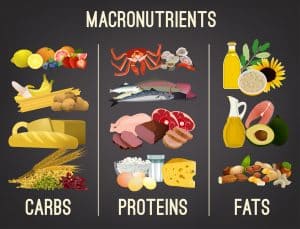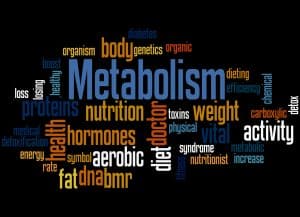I was tracking calories and excelling in meal planning—but something didn’t add up. Regardless of how hard I tried, I couldn’t manage to consume enough protein.
To avoid overdoing it with saturated fatty meats, I turned to whey protein for a boost.
I’m here to let you in on the secrets of this supplement and everything you need to know about whey protein.
- Table of Contents
What Is Whey Protein?
Aside from whey protein’s benefits for our workouts, most of us know quite little about this product. It turns out, its history and origins are quite fascinating.
Whey accounts for 20 percent of the protein found in milk, with the remainder made up of casein.
Its powder form is typically used in meal replacements, infant products, and dietary supplements for gaining muscle or post-workout recovery.
With that said, given its origins, whey protein is also found in natural sources including cottage cheese and yogurt products. Have you ever noticed the juice at the top of the tub? Little did you know it had a purpose.
Whey protein is a byproduct of cheesemaking—the solids (curds) are separated and go on to become the dairy staple. What remains is a portion of liquid, and that’s where you find whey.
Traditionally, this residue was seen as waste by manufacturers, until consumers demanded it for its value.
How Whey Protein Is Made
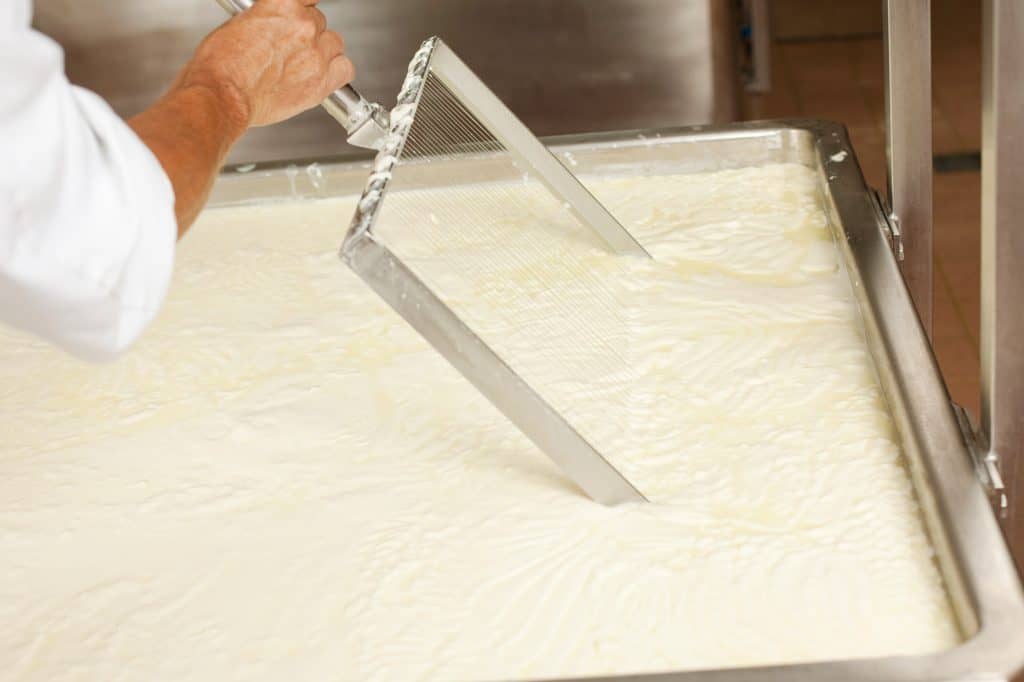
After the liquid is separated, it goes through an HTST pasteurization process to ensure no pathogenic bacteria are present. Thus, making it safe for our consumption.
HTST stands for “high-temperature short-time”—around 5 seconds at 161 degrees Fahrenheit.
A filtering process then occurs to separate the proteins from the liquid. This filtration occurs in one of two ways—through ion exchange or mechanical filtering.
The first is the most common method because it’s cost-effective and leaves you with more amino acids than the second procedure.
However, the downside to ion exchange is that essential compounds, such as lactoferrin, may be lost in the process. This protein binds to iron and helps transport it around our bodies—fulfilling just one reason why we need this macronutrient.
Using a mechanical process, instead, helps these proteins stay intact, but it’s labor-intensive and a more costly filtration method.
The size of the filter and the number of times the whey passes through determines the end product. As one could guess, the more filtration that occurs, the purer the protein content.
The 3 Types of Whey Protein
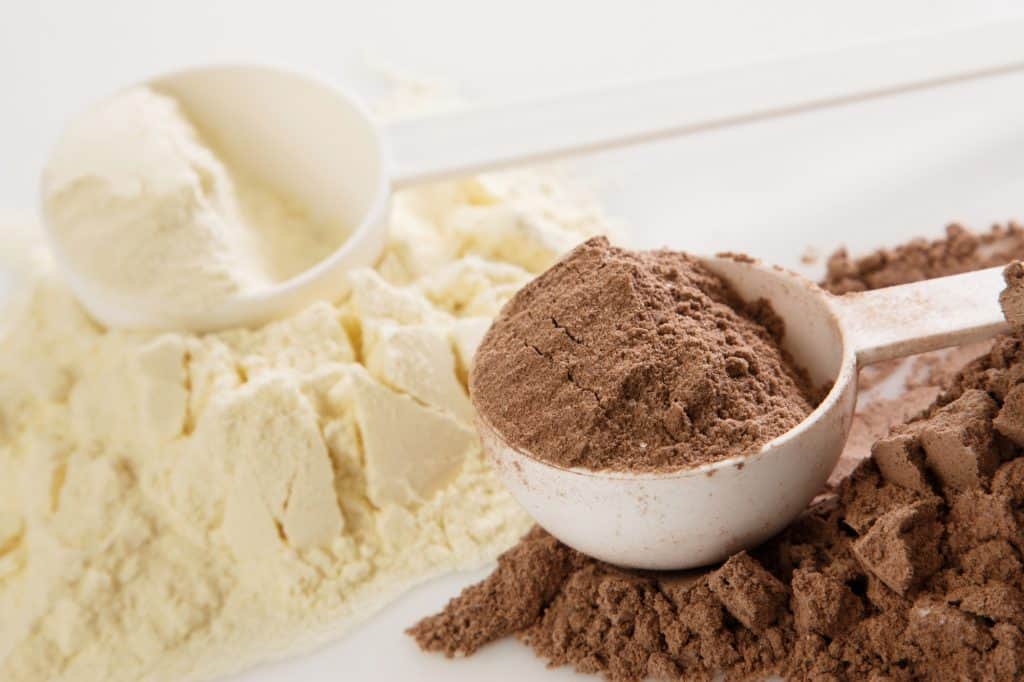
Depending on the type of filtration, there are three primary categories of whey protein —concentrate, isolate, and hydrolyzed. The first two are most prominent, but the third is not without merit.
1
Concentrate
Concentrate is made through an ion-exchange filtration, making it affordable while retaining its amino acid content. This point is crucial as these aminos are the basic building blocks on which protein forms.
Often found in snack bars and other foods, the amount of protein in concentrate is wide-ranging from approximately 25 to 89 percent.
Most whey concentrates sold commercially contain around 80 percent protein, along with five percent lactose, fat and other minerals.
2
Isolate
It’s considered to be superior to its counterpart above. Whey protein isolate has most of the lactose and fat content removed—leaving around 0.5 to one percent of each.
However, it still retains in the region of 90 to 95 percent protein. This high percentage is the reason it’s popular in muscle-building supplements.
The reduction of lactose makes isolate a more suitable option for individuals that have difficulty digesting this milk-derived sugar.
However, due to its rigorous level of processing, it’s more expensive. What’s more, while mechanical filtering presents a higher percentage of proteins overall, other benefits may lessen.
This includes useful amino acids and immunoglobulins—protein particles that act as antibodies.
3
Hydrolyzed
The nutritional content in the types above is easy to establish. However, that isn’t the case with hydrolyzed whey.
What we do know is that this type contains around 80 to 90 percent protein. The procedure involves transforming longer proteins into shorter ones making them more easily digestible. Allergic responses decrease because of this.
You’ll predominantly find this kind of whey protein in infant products, although some supplements use this form too.
The 5 Most Important Benefits of Whey Protein

Now that we understand how whey protein is made and the differences in outcome (types), let’s see what you can gain from using it.
1
Muscle Mass and Performance
To see an increase in performance levels, your force of production must rise. And for this to occur, one requires proper nutrition and resistance training.
When your rate of protein synthesis (post-workout) exceeds that of protein breakdown (during your workout), muscle mass increases.
In bodybuilding circles, whey protein is classed as a kit-bag “staple.” This supplement improves this process and thus, your overall performance.
While whey has a variety of amino acids, one of super importance is leucine—a promoter and kick-starter of muscle growth, and Lysine.
2
Appetite Suppression and Weight Loss
As mentioned earlier, whey protein also acts as a meal replacement. It benefits those who are looking to lose weight but retain or gain, muscle in the process.
In a 12 week study, participants supplemented whey protein while cutting 500 calories from their daily diet. This resulted in an average decrease in fat mass of 6.1 percent, plus each person saw a drop in body weight of more than 5 pounds.
What’s more, they preserved substantially more muscle mass than the control group.
Whey also promotes satiety. One theory is that certain amino acids, when in higher concentrations influence this feeling of fullness.
3
Boosts Immunity
Thanks to its high count of amino acids overall, whey protein supplementation has great value in reducing oxidative stress (cellular aging).
They’re also the reason whey benefits your immune system. It has an anti-inflammatory effect, which is advantageous for athletes and hardcore gym enthusiasts who are exposed to overtraining.
When your routine doesn’t allow your body time to recover fully, your immune system is easily compromised—leaving you open to infection and illness.
4
Improves Gut Health
Overtraining isn’t the only aspect of bodybuilding that can compromise your immunity either.
Where working out can improve gut health, overdoing it can have the opposite response. To combat this, whey protein contains glutamine.
This amino acid has proven to enhance gut permeability. That is, it protects your gut from various pathogens, allergens, and toxins.
5
Stabilizes Blood Pressure
While research isn’t yet conclusive, some studies indicate that whey protein can be used to decrease hypertension (high blood pressure).
This is due to the presence of bioactive peptides, specifically lactokinins. These are short-chain amino acids that can increase your IGF-1 (insulin-like growth factor) levels—one of the primary hormones required for building muscle mass.
It applies to the dairy food group across the board. However, some cardiovascular conditions may worsen by the amount of saturated fat in other products.
For those with hypertension, lowering blood pressure to optimal level lessens your risk of stroke, heart failure, and more.
Whey Protein vs. Alternative Protein Sources
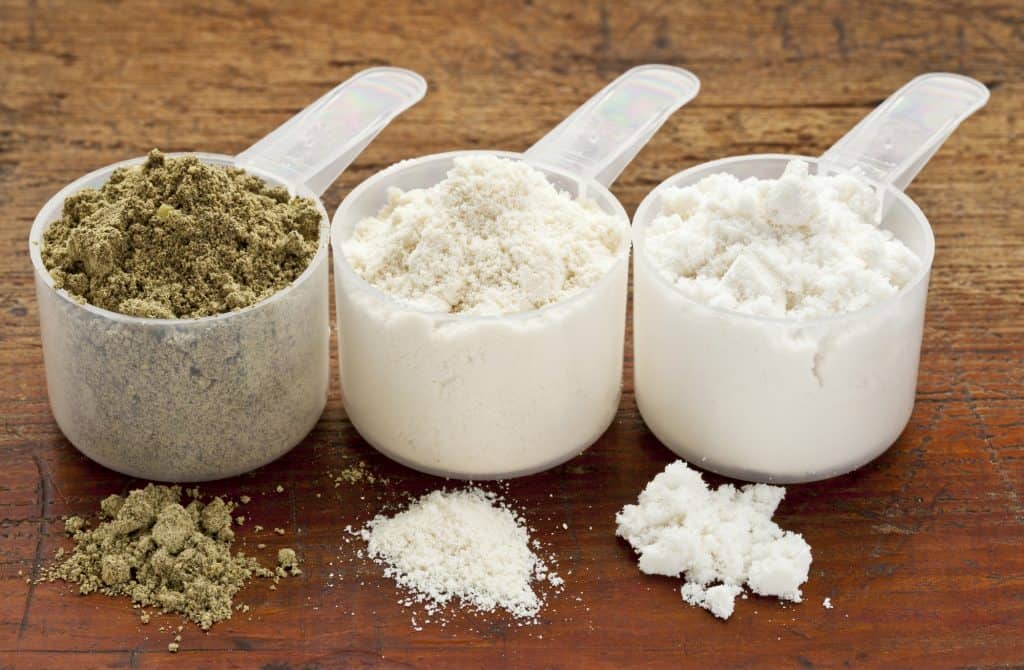
Overall, the benefits per gram compared to other protein sources quickly reveal the advantages of a diet containing whey protein. Let’s look at the alternatives and see how they stack up.
Whey Protein vs. Casein
As mentioned earlier, casein is another protein derivative from milk—making up 80 percent of the content. Similar to whey, it’s a byproduct of cheese and contains all the essential amino acids.
Where whey originates from the liquid post-processing, the curds contain casein. Nutrition-wise this protein provides more calcium, iron, carbohydrates, and calories than whey.
Furthermore, it’s slower to digest, which means you’ll receive the benefits for a longer time frame. This is why it’s often consumed before bedtime—to enhance your body’s natural recovery processes overnight. However, casein is typically more expensive and also doesn’t mix as well.
In terms of science and muscle gains its a mixed bag. Research indicates that protein synthesis is more significant when supplementing whey protein as opposed to casein. Whereas, other studies conclude their effects on performance are on par with each other.
For the ultimate boost to your protein intake, combine both whey and casein into your routine. Whey during the day, after training and save casein for your nightcap.
Whey Protein vs. Plant-Based
For those that adhere to a vegetarian or vegan diet, animal-protein powders aren’t a viable option for you. Plant-based in general and soy, in particular, is a common choice.
Soy-based protein powder is processed from soybean meal. Defatted and dehulled beans are then transformed into three different products—soy flour, isolates, and concentrates.
Isolates contain around 90 percent protein, concentrates 70 percent and flour comes in at 50 percent. Compared to whey protein, soy is less satiating, so, not as productive at suppressing the appetite.
Other options include powders made from rice or pea. Many come in mixed form. While the protein content is significantly less at around 22 grams per double scoop, the supplement will still be useful.
Pea protein, in particular, contains generous amounts of BCAAs (branched-chain amino acids). Preliminary studies suggest that pea and whey have similar outcomes on muscle growth.
Also available are vegan-friendly protein powders made from seeds including chia, pumpkin, sunflower, and hemp.
Overall Protein Quality
What about protein quality?
It’s typically measured with two scores—one is the biological value, or how well an animal can utilize that protein. The other rating evaluates a source’s amino acid availability and how well the human body digests it.
Remember here that these are crucial for strength and muscle growth.
It turns out, whey protein has a similar amino acid score to eggs and cottage cheese—hanging out at the top of the list.
With biological value, however, it conquers all other forms of protein including, beef, soy, milk, peanuts, and more.
Not only is whey protein easily digested and utilized by your body, but it does so with greater efficacy than any other source available. It also comes out on top regarding its positive impact on inflammation and cardiovascular function.
The Best way to Use Whey Protein
Essentially, whey protein is similar to any other food product in that you use it as you best see fit. For strength building, there are some important factors to keep in mind.
In terms of training and timing, this supplement is usually consumed post-workout to support protein synthesis and enhance the recovery process. Whey protein digests rapidly making it easy to consume, and utilize, during that anabolic window—within 30 minutes to 2 hours maximum.
Depending on your caloric intake, a typical serving will be between 20 and 40 grams, which can easily be measured by the provided scoop. Lower doses may still be beneficial for gains.
In powder form, whey is a versatile supplement—you can mix into oatmeal or smoothies for that extra boost. Conversely, you can purchase protein bars. These pre-packaged snacks provide you with a convenient option to top up your intake, even if you’re on a keto diet.
However, be aware that consuming whey protein in this form may account for a smaller serving of protein so always read the labels.
For those that are using whey protein for fat loss or other circumstances, carry a shaker bottle (pre-scooped) with you in your gym bag. When you’re on the go and unable to get a protein-rich meal, you can mix that with water. This way, it functions as a meal replacement.
As we know, whey protein isn’t only consumed as a protein powder—lest we forget its roots.
Foods With Whey Protein
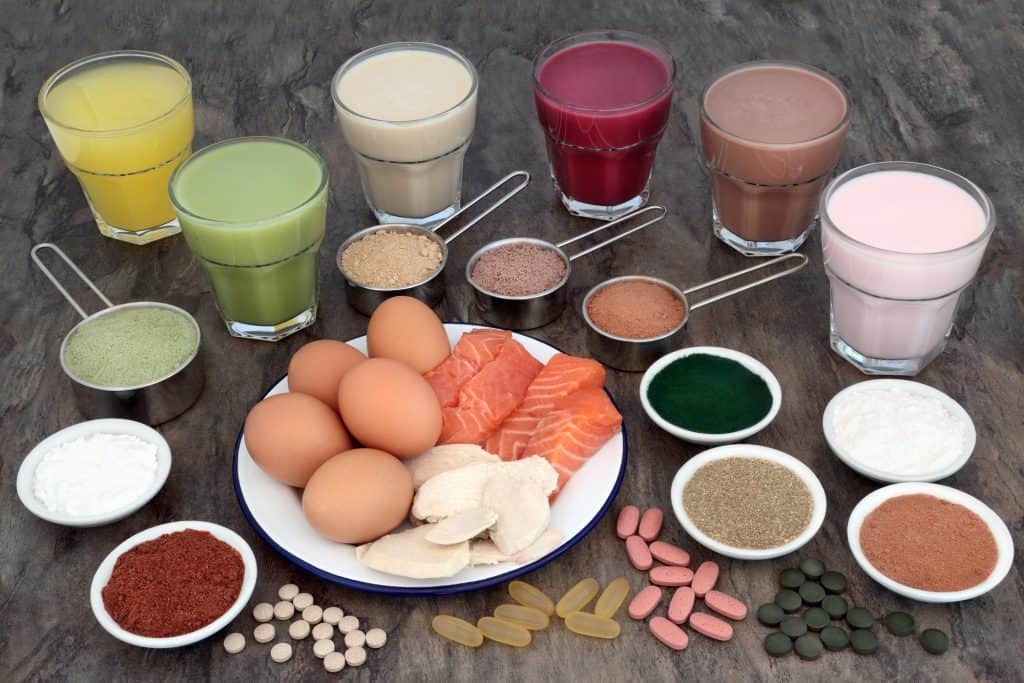
To benefit from whey protein in its natural form, the obvious choice would be to incorporate yogurt and cheese into your diet. It doesn’t stop there, though.
For a broader picture of whey protein and how we can consume it, the following foodstuffs may also contain this amino-acid-laden powerhouse:
- Salad dressings.
- Emulsifiers—increases shelf life and smooth texture in processed foods.
- Baked goods—muffins, crackers, etc.
- Medical nutritional formulas.
- Butter.
- Soups.
Now, the amount of whey protein within the foods depends on how much protein is present to begin with. These items will not, in and of themselves, contain enough for muscle gains. However, it all adds to your overall intake of this macronutrient.
Drawbacks of Whey Protein
There are some potential adverse effects when using whey protein. These mainly revolve around digestion.
As mentioned earlier, whey protein can benefit gut health. After all, it serves as protection from invasive pathogens and toxins.
In other ways, though, it can disrupt digestion—including:
- Constipation.
- Stomach cramps.
- Diarrhea.
- Bloating and gas.
These symptoms are usually most prevalent during your adjustment period. You may see the side effects lessen over time.
For those who suffer dietary intolerances, whey protein isolate contains less lactose than the others.
Alternatively, you could potentially have an allergic reaction to whey protein or cow’s milk. While rare, this allergy is present for some adults, and ingesting whey protein can be a cause.
Overconsumption of Protein
Suffice it to say, research indicates drawbacks to an overabundance of protein in general, which could include whey protein.
When people prescribe themselves protein supplements, they may not know how to dose correctly. Many, unfortunately, go off hearsay and misguided beliefs. This then leads to overconsumption.
Too much of a good thing could be harmful in this scenario. When extra protein isn’t utilized efficiently, it may cause metabolic stress on the kidneys, liver, and bones.
Typically, high-protein diets can lead to a risk of heart disease, high cholesterol, or even cancer—partially due to the amount of saturated fats in many types of meats.
It’s essential to read labels and follow guidelines where the dosage is concerned.
If you’re curious to know how much protein you should be consuming daily? You can find out by using this calculator.
Whey Protein: Questions and Answers
Here we answer some commonly asked questions regarding whey protein.
Q: Should Women Use Different Whey Protein Than Men?
A: This is one area where men and women don’t differ. Since women often weigh less, their daily protein requirements are typically lower in general. Meaning, they’ll use less whey protein than the average male.
However, there are no gender-specific regulations around the use of whey protein.
Q: Can I Cook With Whey Protein?
A: As mentioned earlier, baked goods contain whey protein. Aside from its use as an emulsifier, the powder can be added directly into cakes, brownies and the like.
When put under extreme temperature, it may “denature” the protein. This means is that the enzymes break down for easier digestion.
The nutritional value of the powder doesn’t change—you still absorb the amino acids and proteins as you would with an uncooked item such as a milkshake.
Q: Should I Only Consume Isolates Since They’re Highest in Protein?
A: You’ve already learned that isolates contain the highest amount of protein, compared to the other forms of whey.
However, this doesn’t mean you’ll benefit the most by consuming this type alone. Keep in mind that in the process of retaining all that protein, other benefits fall to the wayside, including immunoglobulins.
To reap the benefits of whey protein, we suggest you find a balance between concentrates and isolates.
Q: What Liquids Are Best for Mixing With Whey Protein?
A: For protein absorption, whichever liquid you choose isn’t going to make a difference. Some claim that mixing whey protein with milk will enhance your uptake, but that remains to be seen.
However, the type of liquid you use does matter in terms of texture. Water will make it on the thin side, while milk thickens it up. This comes down to personal preference and how much time you have on a given day.
Water is suitable, easy to mix, and convenient when you’re on the go. It’s commonly used because of this.
Q: Can I Combine Whey Protein With Other Supplements?
A: It depends on the supplement. Something like glutamine may be too much since whey protein powders typically contain a considerable amount already.
But creatine, for example, could work well in conjunction with it. Powdered greens for smoothies would also provide a good booster to whey protein, thanks to the high content of vitamins and minerals.
Q: Is It Safe to Use Whey Protein?
A: Providing you follow the manufacturer’s directions for use, on the whole, whey protein is considered to be among the safest nutritional supplements to use.
However, with any form of supplementation, there is always a chance of adverse reactions. Precautions are even stated on your everyday multivitamins.
Everyone reacts differently, therefore if you do have any concerns speak with your doctor before commencing use (see below).
Furthermore, sugar content deserves a mention.
This varies greatly between products, but some contain as much as 23 grams of added sugar per scoop. In contrast, the American Heart Association recommends only 24 grams of sugar per day (100 calories) for women and 36 for men (150 calories).
Combine that with a glass of milk and your caloric intake could be substantial. For dieters, this could come at a cost.
Who Should Avoid Whey Protein?
Medical Reasons
Whey protein can interact with certain preparations—inhibiting absorption and reducing effectiveness.
For those currently taking any medications for Parkinson’s disease, osteoporosis or even antibiotics, talk with your doctor before consuming whey protein powder. Other conditions including, kidney disease or diabetes, could also be affected by supplementation.
Pregnant Women
Not enough research has been conducted on the outcomes of whey protein and pregnancy. However, we do know the importance of a hearty diet has on fetal growth. The general belief is to be on the safe side and avoid.
Uner 18 Year Old
Although there are some exceptions, supplements of this nature are produced with the adult in mind. Furthermore, teens and adolescents should aim to meet their protein requirements via whole foods.
That said, if they decide whey protein is required, teenagers need to exercise caution when consuming in place of whole meals. Nutritional deficiencies can occur due to inadequate intake of other vitamins and minerals. A parent or doctor should discuss this risk with any teen before use.
The Takeaway
This milk byproduct is proven time and time again to offer numerous benefits including, but not limited to, upping muscle gain and performance at the gym.
When consumed in proper amounts, whey protein can also assist fat loss and appetite suppression. It functions as a realistic meal replacement that’s low in calories and fat but high in protein.
Take advantage of whey protein and watch your nutrition strategy fall into place.










